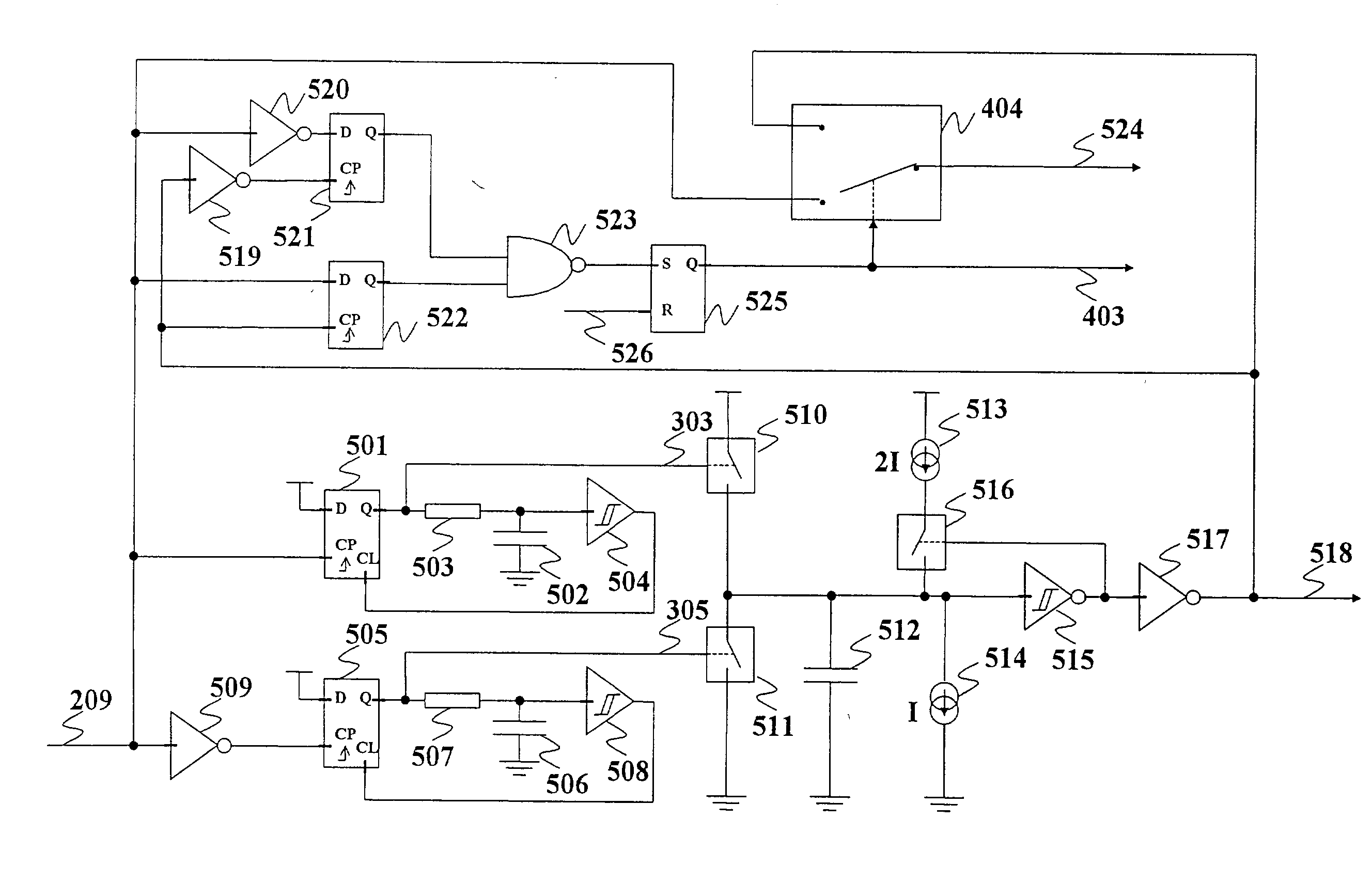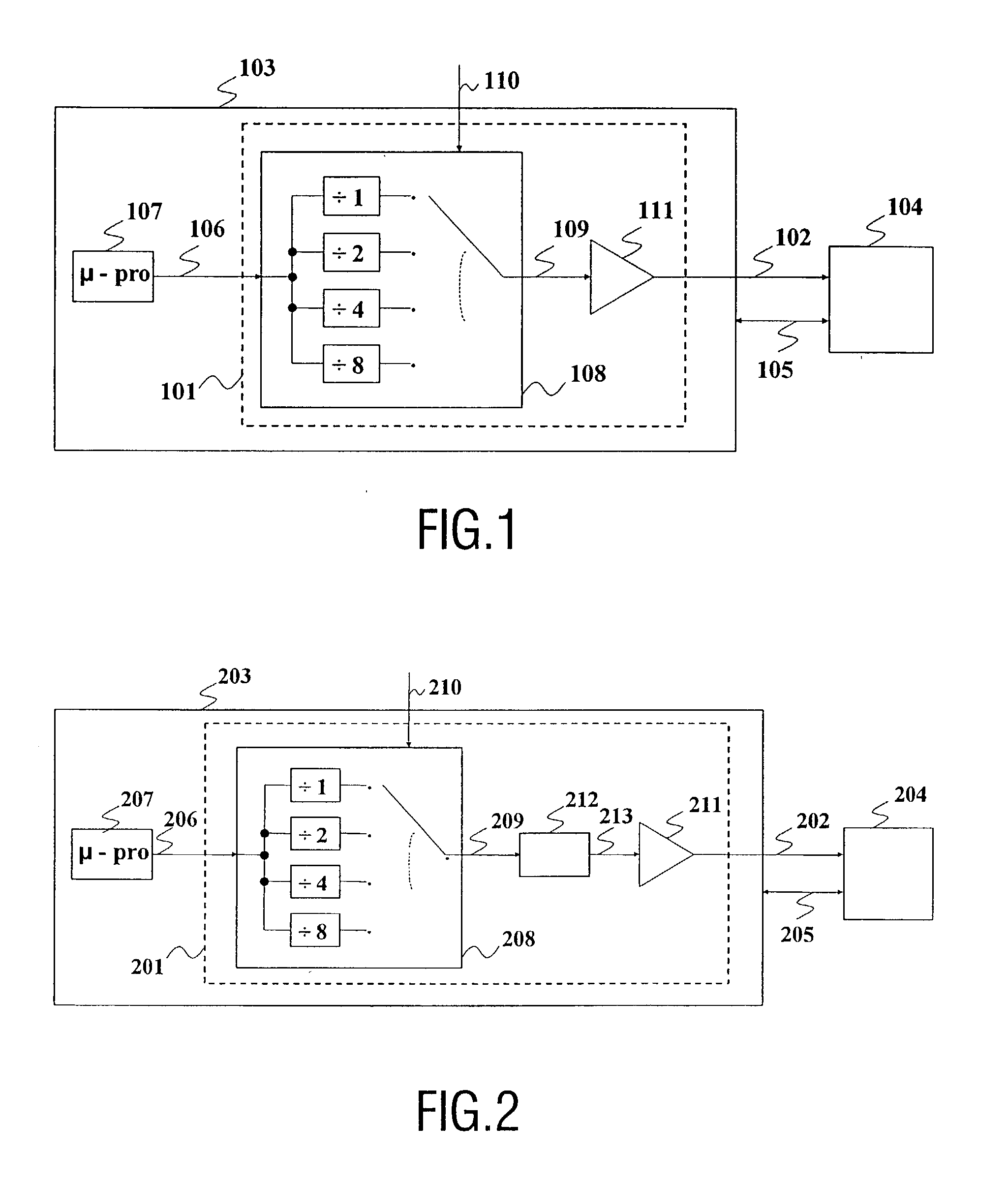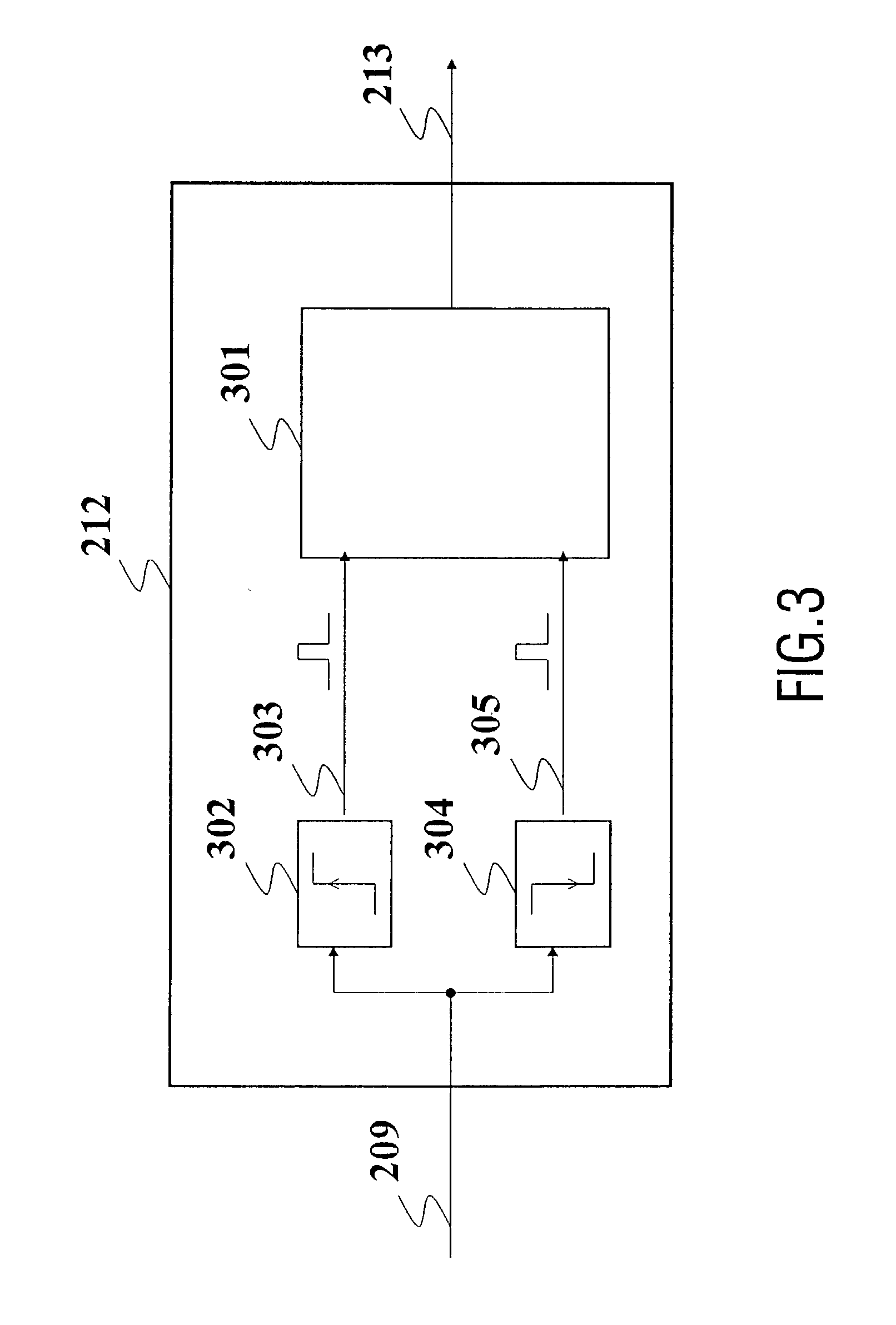Device for generating a clock signal
a clock signal and device technology, applied in the direction of generating/distributing signals, instruments, pulse techniques, etc., can solve the problems of many functional limitations of the device, the device cannot make it possible to deliver an output clock signal, and the device described, so as to ensure the function of the generating device according to the invention
- Summary
- Abstract
- Description
- Claims
- Application Information
AI Technical Summary
Benefits of technology
Problems solved by technology
Method used
Image
Examples
first embodiment
[0036] FIG. 3 is a functional representation of a device for generating a clock signal 213, according to the functional unit 212 described in FIG. 2. The functional unit 212 comprises an oscillator 301 generating said second clock signal 213 before any amplification by the amplification stage 211.
[0037] The oscillator 301 is characterized by the fact that it can function according to two different modes, that is, in a forced mode or in a free mode, according to the state of said first clock signal 209.
[0038] When said first clock signal 209 is actually present, that is, the signal 209 consists of a regular succession of rising and falling edges over time, the oscillator 301 functions in the forced mode. For this purpose, a rising edge detector 302 is provided, delivering an output pulse 303 to the oscillator 301 on each rising edge of the signal 209. Likewise, a falling edge detector 301 is provided delivering an output pulse 305 to the oscillator 301 on each falling edge of the sig...
second embodiment
[0048] FIG. 4 is a functional representation of a device for generating a clock signal 213 according to the functional unit 212 described in FIG. 2.
[0049] This functional unit 212 is composed of the elements 301, 302 and 303 arranged in an identical fashion to FIG. 3, leading to the generation of the clock signal 401 by the oscillator 301. It also has a detector 402 for detecting the presence or absence of rising or falling edges in said first clock signal 209, in order to generate a control signal 403 with two logic levels. For this, the detector 402 performs a simultaneous analysis of the clock signals 209 and 401 which it receives at its inputs.
[0050] As seen previously, a rising edge of said first clock signal 209 triggers a rising edge in said second clock signal 401, and a falling edge of said first clock signal 209 triggers a falling edge in said second clock signal 401. Because of the inevitable processing delay in the circuits constituting the detectors 302 and 303, when th...
PUM
 Login to View More
Login to View More Abstract
Description
Claims
Application Information
 Login to View More
Login to View More - R&D
- Intellectual Property
- Life Sciences
- Materials
- Tech Scout
- Unparalleled Data Quality
- Higher Quality Content
- 60% Fewer Hallucinations
Browse by: Latest US Patents, China's latest patents, Technical Efficacy Thesaurus, Application Domain, Technology Topic, Popular Technical Reports.
© 2025 PatSnap. All rights reserved.Legal|Privacy policy|Modern Slavery Act Transparency Statement|Sitemap|About US| Contact US: help@patsnap.com



